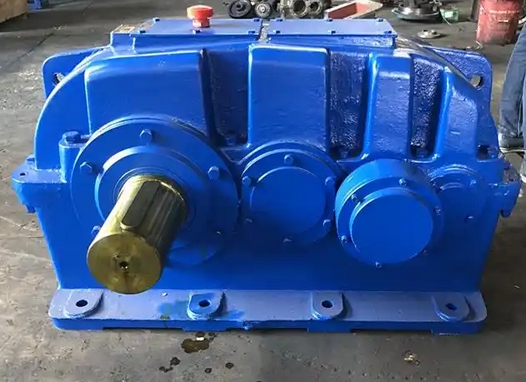How to ensure that the heat treatment hardness meets the requirements during the design and processing of ZLY160-20 reducer gears
In the design and machining process of ZLY160-20-4N reducer gears, the hardness of heat treatment can be ensured to meet the requirements through the following methods:
Reasonably design gears
Optimize tooth profile parameters: Reasonably determine parameters such as tooth crest height, tooth root height, and modulus to avoid uneven hardness distribution between the tooth surface and tooth root. For example, adjusting the tooth crest height coefficient appropriately can improve the tooth root interference in gear transmission, reduce stress concentration at the tooth root during heat treatment, and improve the hardness and fatigue strength of the tooth root.

Consider gear structure: During design, the gear shape should be symmetrical and the cross-section should be uniform to reduce thermal stress caused by uneven heat transfer. For gears with complex shapes, stress distribution during heat treatment can be improved and hardness uniformity can be ensured by increasing process holes, optimizing spoke structure, and other methods.
Strictly control the quality of raw materials
Choose appropriate steel: Select steel with appropriate hardenability according to the requirements and load conditions of the gear. For gears that require high hardness, low-carbon alloy steels such as 20Cr and 20CrNi2Mo can be used for carburizing and quenching, or medium carbon alloy steels such as 40Cr and 35CrMo can be used for quenching to obtain the required hardness.
Inspection of material defects: Raw materials should be free of severe segregation, inclusions, and other defects that can affect the microstructure transformation and hardness distribution during heat treatment. Strict inspection of raw materials can be carried out through metallographic examination, flaw detection and other methods to ensure that the quality meets the requirements.
Optimize processing technology
Forging process: Adopting an appropriate forging ratio, generally between 3-5, to make the internal structure of the steel dense and uniform, improve the streamline distribution of the metal, and enhance the comprehensive performance of the gear. At the same time, control the forging heating temperature and cooling rate to avoid defects such as overheating and undercooling, creating favorable organizational conditions for subsequent heat treatment.
Cutting: Control the cutting amount to avoid residual stress caused by excessive cutting force, which affects the hardness of heat treatment. For example, when precision rolling teeth, the tooth profile error cannot exceed 0.03 millimeters, and the tooth surface roughness meets the design requirements to reduce the influence of machining stress on heat treatment deformation and hardness. In addition, it is necessary to keep the cutting tools sharp during the processing and replace worn tools in a timely manner.
Accurate control of heat treatment process
Carburizing process: For gears that require carburizing, precise control of carburizing temperature and time. If the preheating temperature is 500-550 ℃, the secondary heating temperature is 800-850 ℃, the initial carburizing temperature is 900-950 ℃, the strong carburizing temperature is 950-1000 ℃, the diffusion carburizing temperature is 900-950 ℃, and the quenching carburizing temperature is 800-850 ℃, in order to ensure that the depth of the carburizing layer and the distribution of carbon concentration meet the requirements, and thus obtain suitable surface hardness. At the same time, control the flow rate and type of carburizing agent to ensure a uniform and stable carburizing process.

